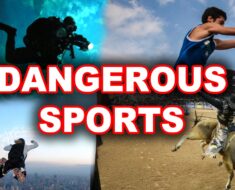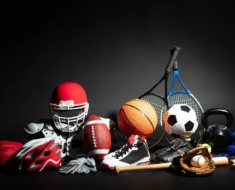Despite what the name implies, sports medicine is not confined to the athletic field. The branch of orthopedics consists of the treatment of injuries resulting from physical activity. These injuries can occur due to overuse, over-exertion, traumatic collision, or over-extension of the ligaments and cartilage of joints. Sports injuries can occur to any part of the body; however, the majority of sports injuries occur in the major joints, including the shoulder, hip, knee, and ankle.
Minimally Invasive Rotator Cuff Surgery
A common sports-associated injury of the shoulder is a rotator cuff tear. Composed of a group of four different muscles and tendons, the rotator cuff coordinates the movement of the arm at the shoulder. A tear of these muscles due to a traumatic impact, repetitive motion, or a strong pull may result in serious pain and the loss of mobility in the shoulder.
Based on severity of the injury, a rotator cuff tear can be repaired through surgical or non-surgical methods. If pain is not relieved through non-surgical efforts and surgery is required, rotator cuff tears can be repaired through arthroscopic techniques. A minimally invasive procedure, arthroscopic surgery involves two small incisions for the insertion of a fiber-optic camera and specialized operating tools. Arthroscopic surgery usually results in the successful repair of the rotator cuff and an abbreviated and less painful recovery time.
ACL Repair Surgery for Knee Pain
A commonly performed sports medicine procedure is the repair of the anterior cruciate ligament (ACL) located within the knee. The ACL provides rotational stability to the knee and tears to the ligament occur due to over rotation, sudden changes in direction, landing incorrectly, or traumatic collision. Symptoms of an ACL tear include a ‘popping’ noise and the inability to put weight on the knee joint, followed by pain and swelling.
Non-surgical treatment options are available after an ACL tear; however, a torn ACL will not heal on its own and surgery is necessary to return to an active lifestyle. Advances in knee surgery techniques now allow a torn ACL to be repaired through an arthroscopic procedure. Arthroscopic surgery techniques allow for a faster recovery time, although an athlete will require at least six months before returning to sports.
Torn Meniscus Surgery for Knee Pain
The meniscus consists of two pieces of cartilage located between the thigh bone and the shinbone that act as cushioning and ‘shock absorbers’ between the two bones. Sports-related meniscal tears result from excess stress on the knee joint from traumatic collision, squatting, or over rotation, and often accompanies other knee injuries, such as an ACL tear.
Walking is still possible after a meniscal tear and athletes may continue to play through the injury. However, the knee will gradually become more stiff and swollen over a period of a few days. Non-surgical approaches to treatment include the RICE protocol of Rest, Ice, Compression, and Elevation. If the severity of the injury necessitates surgery, arthroscopic techniques utilizing a fiber-optic camera and miniature instruments will allow for the minimally invasive repair of the meniscus.
Shin Splint Repair
Shin splints are a common sports-related injury, as the condition results due to exercise-related overuse. Shin splints, or medial tibial stress syndrome, develop as repetitive, excessive physical activity causes muscle fatigue leading to extra force to be applied to the tissue attaching muscles to the shinbone.
Shin splints are treated with rest and a refrain from physical activity. Rarely do shin splints require surgery; however, persistent pain may indicate the development of multiple microfractures in the tibia. Microfractures are severe and may require the evaluation of a physician.
Achilles Tendon Repair Surgery
The Achilles tendon is the largest tendon in the body and connects the muscles in the back of the lower leg to the heel bone. The Achilles tendon is essential to mobility as it is used to walk, run, and jump. Tears can occur when the Achilles tendon is overstretched and cannot withstand the large forces exerted on it during physical activity. Pain and swelling accompany an Achilles tendon tear, as well as the inability to bend the foot downward.
Surgery is likely the only option to repair a completely torn Achilles tendon for patients who wish to return to sports. Surgically repaired Achilles tendons are more likely to return to near normal performance and less likely to be re-injured.





